Chinese New Year: How Different Countries Celebrate It and Why “Lunar New Year” is Incorrect

2022 (starting February 1st) is the Year of the Tiger of the Chinese zodiac. ©Getty Images
February 9, 2022
Chinese New Year (also known as: Lunar New Year) was February 1st this year, ushering in the Year of the Tiger, and celebrations rang around the world. The festivities are primarily observed by countries in East and Southeast Asia such as China, South & North Korea, Vietnam, as well as by diaspora in various countries. Countries in the Sinosphere celebrate Chinese New Year differently based on cultural variations.
Because of China’s history as an agricultural society, the concept of “the New Year” has been important in terms of harvest for thousands of years. The earliest Chinese calendars were lunar calendars from the Xia dynasty (existence debated) around 4,000 years ago. The first lunisolar calendar was developed in the Zhou dynasty (~3,000 years ago), and thus began the celebration of the agricultural new year. While the Republic of China (retained by the successive People’s Republic of China) switched to the Gregorian calendar in 1912 (marking the end of dynastic China), the traditional Chinese lunisolar calendar is still used for governing holidays and other cultural endeavors. Korean New Year (Seollal) and Vietnamese New Year (Tết Nguyên Đán) are based on the Chinese lunisolar calendar.
China’s Celebrations
As the origin place of the festival, China holds the largest celebration of Chinese New Year, and is akin to Christmas in the United States. In China, the holiday is known officially as “Spring Festival” (春节) and colloquially as “observing the new year” (过年). The official beginning of the festivities of the New Year is marked by the Laba Festival, celebrated on the eighth day of the twelfth month of the traditional Chinese calendar, and ends on Yuanxiao Festival, the fifteenth day of the new year.
Laba Festival (腊八节) is typically observed by serving Laba congee, a porridge cooked with rice, millet, jujubes, peanuts, red beans, and lotus seeds. Some parts of Northern China also prepare Laba garlic (which due to fermentation, turns green!).
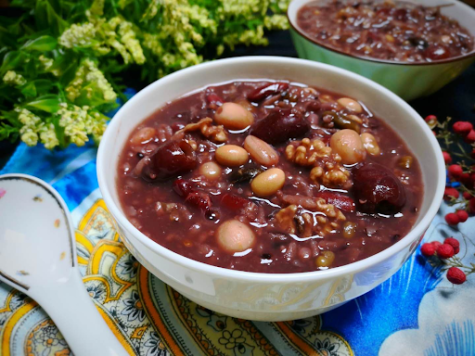
The preparation for the New Year starts on “Little New Year” (小年), also known as Kitchen God Festival. Around this time, family members from all around the country travel back to their hometowns to reunite with family (known as Chunyun, the largest annual human migration in the world), clean their houses, and decorate with jianzhi (paper cut designs) and spring couplets.
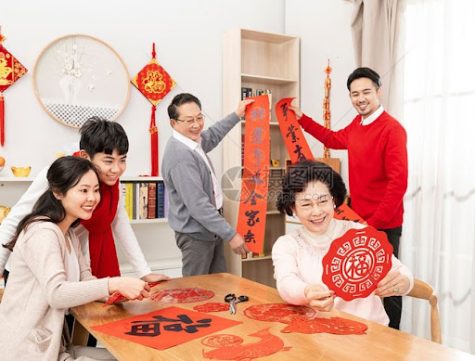
The most significant day of the Spring Festival celebration is Chinese New Year’s Eve (除夕). Once all family members have been reunited, the preparation for the New Year’s Feast (年夜饭) begins, and the CCTV Spring Festival Gala is turned on. It is also tradition to wear red. The food served at the New Year’s Feast all symbolize auspicious hopes for the new year to come, including fish (fish is a homophone for “surplus”, in terms of wealth) and glutinous rice balls (a homophone for “togetherness”). Northern and Southern China vary in served dishes, but fish and rice balls typically are served in both. At midnight, firecrackers are traditionally set off, but out of environmental and health concerns, they have been banned in most Chinese cities.
The first day of the new year (the official Chinese New Year) kicks off by knocking on relatives’ doors and wishing them a Happy New Year. The exchange of red envelopes (envelopes filled with money for children) occurs after the children bow to their elders with their New Year greetings. (Or if you are oceans away, this happens over video chat.)
Yuanxiao Festival (元宵节), also known as Lantern Festival, marks the end of the Chinese New Year festivities. Yuanxiao Festival is typically celebrated by eating tangyuan (a glutinous rice ball with sweet filling, such as red bean paste or sesame paste), displaying lanterns, and guessing lantern riddles.
Korean New Year/Seollal
Koreans also celebrate the new year of the Chinese lunisolar calendar, and Chinese records show the earliest celebrations going back to the Sui Dynasty.
Seollal (설날) celebrations usually begin with people rushing back to their hometowns to reunite with family. Family members put on hanbok (traditional Korean clothing) and perform sebae (세배), where the younger generation kneels and bows to their elders to wish them a happy new year. After performing sebae, the younger generation receives sebaet don (New Year’s money).
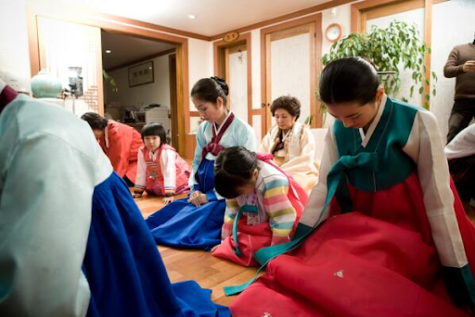
The main traditional dish served on Seollal is tteokguk, a sliced rice cake soup, typically served with seasoned seaweed and beef. The sliced rice cakes symbolize coins for prosperity and the color white represents purity and cleanliness for the new year.
Korean families also often play games during Seollal, with Yut Nori being the most popular. Yut Nori is a board game played with 4 yut sticks and 4 tokens per team.
Vietnamese New Year/Tết Nguyên Đán
Chinese policies, culture, and traditions were brought to Vietnam by the Qin Dynasty (2,200 years ago) general Zhao Tuo when he founded the Nanyue kingdom (modern-day Guangdong, Guangxi, Hainan, Hong Kong, central to northern Vietnam), including Chinese New Year. Vietnamese New Year, abbreviated as Tết, is a very important holiday in Vietnamese culture. Vietnamese people return to their hometowns for the festivities.
The preparations for New Year begin with Kitchen Guardians’ Day, where families prepare food and burn incense near the altar for the Kitchen Guardians (who return to the Jade Emperor for a report) in hopes of a favourable new year.
The first day of the new year is when children wear new clothes, greet their elders with New Year’s wishes, and receive red envelopes in return. Traditional foods include bánh chưng (glutinous rice with meat or bean fillings wrapped with plant leaves) and mứt (preserved candied fruit).
Other traditions include the cây nêu, a New Year’s tree, which is not a tree, but a bamboo stem around 15-20 feet high. The New Year’s tree is adorned with origami fish, clay bells, and “lucky red paper”. Vietnamese homes are also typically decorated with flowers for the New Year, such as yellow apricot or peach blossoms.
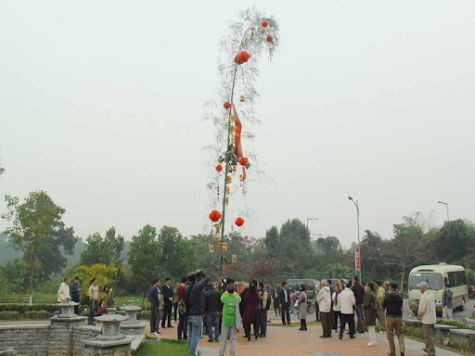
Lunar New Year is Technically Incorrect
Growing in popularity over the years is the term “Lunar New Year”, as an effort to be more inclusive. “Lunar New Year” is usually used to refer to the festivities in various countries based on the new year in the Chinese lunisolar (based on both sun and moon) calendar. None of the holidays “Lunar New Year” is supposed to refer to is based on a lunar calendar. It is not a “lunar new year”. Lunar calendars (calendars based solely on the phases of the moon) exist, such as the Islamic calendar.
All the countries that celebrate the New Year of the Chinese lunisolar calendar have their own cultures and traditions, but when companies and businesses wish “Asians” a “Happy Lunar New Year”, they very often only use Chinese imagery, such as the lion dance, Chinese zodiac signs (of which the Vietnamese calendar has the buffalo and the cat, instead of the ox and the rabbit), Chinese lanterns, etc.
That’s not inclusive of itself. The most accurate name would still be Chinese New Year, as it is based on the Chinese lunisolar calendar (known in Chinese as the Agricultural calendar). Christmas is celebrated by Christians as a religious commemoration, as well as by non-Christians as a cultural holiday. Christmas’s name, despite the globalization and different ways it is celebrated around the world, has not been changed into an inaccurate term. (“Happy Holidays” is not inaccurate.)
Because of the growing trend of “Lunar New Year”, it has misled many, including Kiara Nguyen, a student at the University of Southern California, to believe that “Chinese New Year” is “incorrect”. She took over USC’s public Instagram account with a presentation of the word “Chinese” crossed out in red and backed up her point with the fact that red envelopes are called “li xi” in Vietnamese. Writing someone’s name, or crossing it out in red ink is extremely disrespectful in Chinese culture, especially in the context of Chinese New Year. Chinese students pointed out in the comments that “li xi” originates from Cantonese.
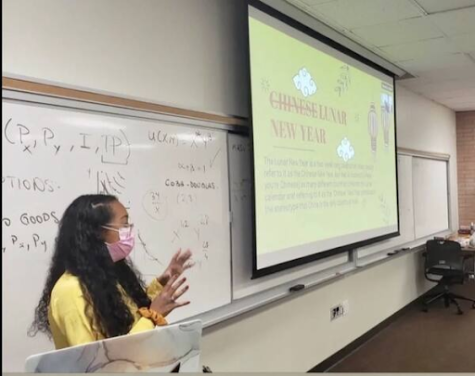
It is my personal opinion that the most suitable phrase would be the one you celebrate, and in “general terms”, “Chinese lunisolar New Year”. Happy Chinese New Year/Seollal/Tết!








